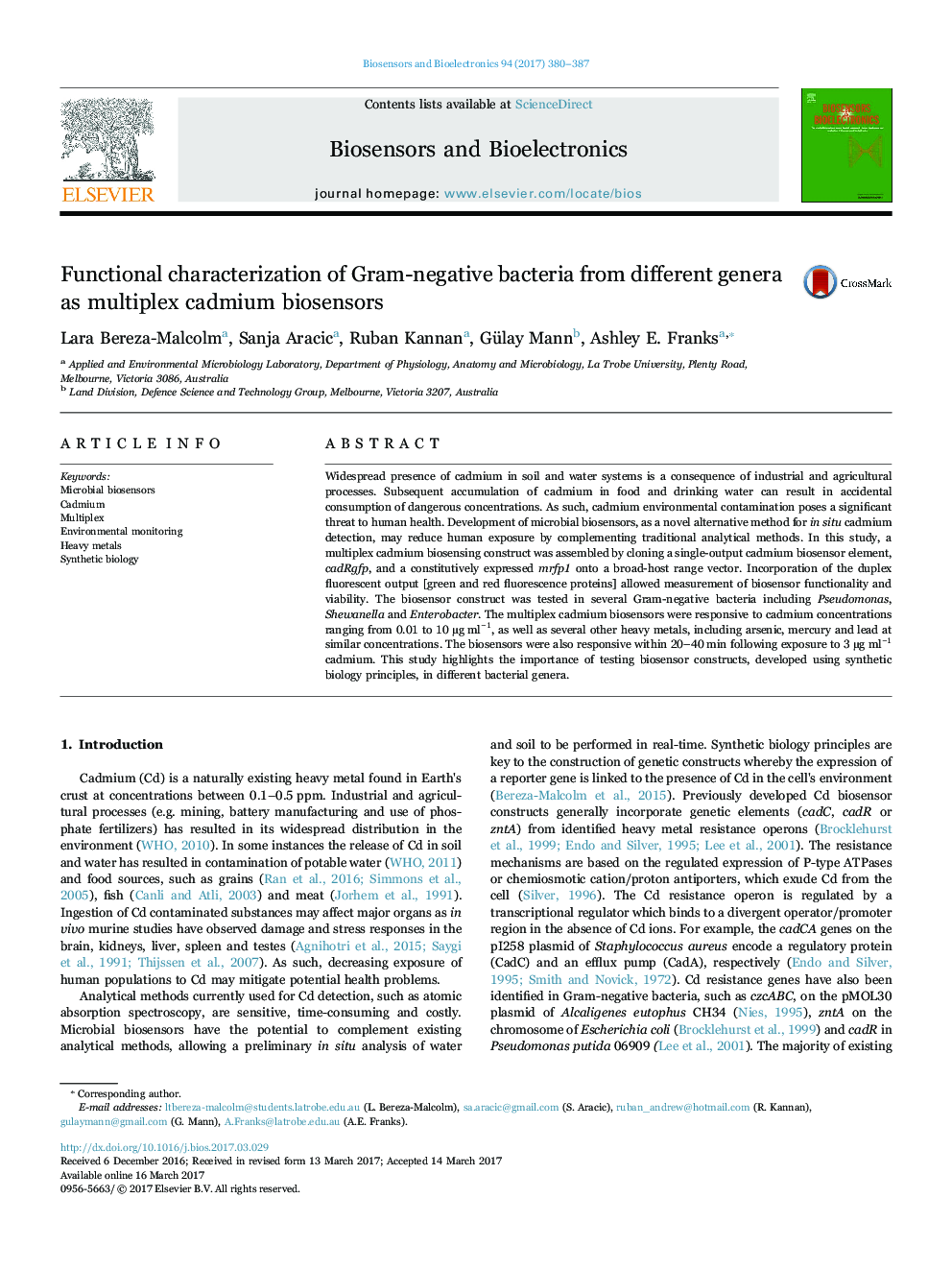| Article ID | Journal | Published Year | Pages | File Type |
|---|---|---|---|---|
| 5031068 | Biosensors and Bioelectronics | 2017 | 8 Pages |
Abstract
Widespread presence of cadmium in soil and water systems is a consequence of industrial and agricultural processes. Subsequent accumulation of cadmium in food and drinking water can result in accidental consumption of dangerous concentrations. As such, cadmium environmental contamination poses a significant threat to human health. Development of microbial biosensors, as a novel alternative method for in situ cadmium detection, may reduce human exposure by complementing traditional analytical methods. In this study, a multiplex cadmium biosensing construct was assembled by cloning a single-output cadmium biosensor element, cadRgfp, and a constitutively expressed mrfp1 onto a broad-host range vector. Incorporation of the duplex fluorescent output [green and red fluorescence proteins] allowed measurement of biosensor functionality and viability. The biosensor construct was tested in several Gram-negative bacteria including Pseudomonas, Shewanella and Enterobacter. The multiplex cadmium biosensors were responsive to cadmium concentrations ranging from 0.01 to 10 µg mlâ1, as well as several other heavy metals, including arsenic, mercury and lead at similar concentrations. The biosensors were also responsive within 20-40 min following exposure to 3 µg mlâ1 cadmium. This study highlights the importance of testing biosensor constructs, developed using synthetic biology principles, in different bacterial genera.
Related Topics
Physical Sciences and Engineering
Chemistry
Analytical Chemistry
Authors
Lara Bereza-Malcolm, Sanja Aracic, Ruban Kannan, Gülay Mann, Ashley E. Franks,
